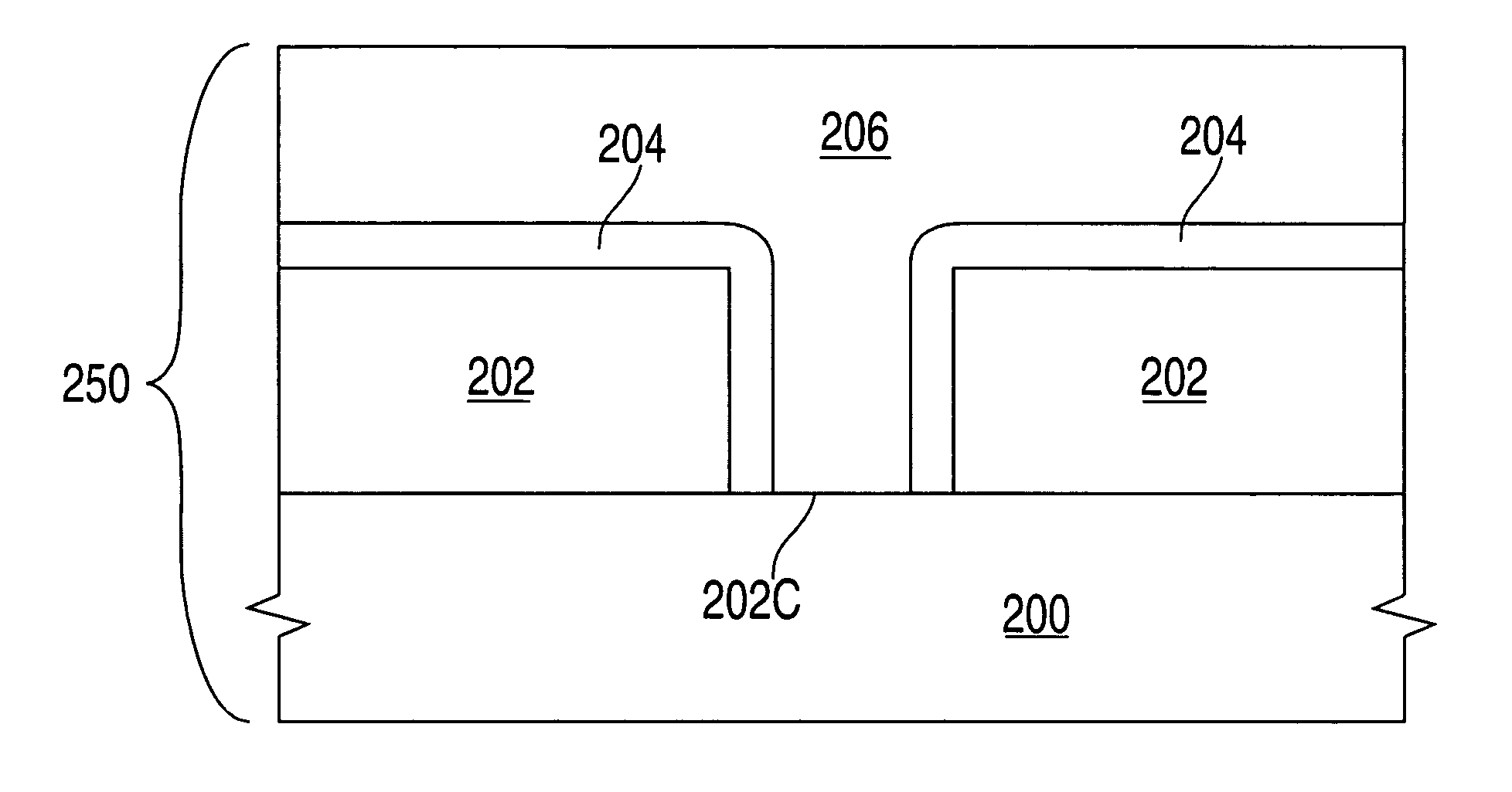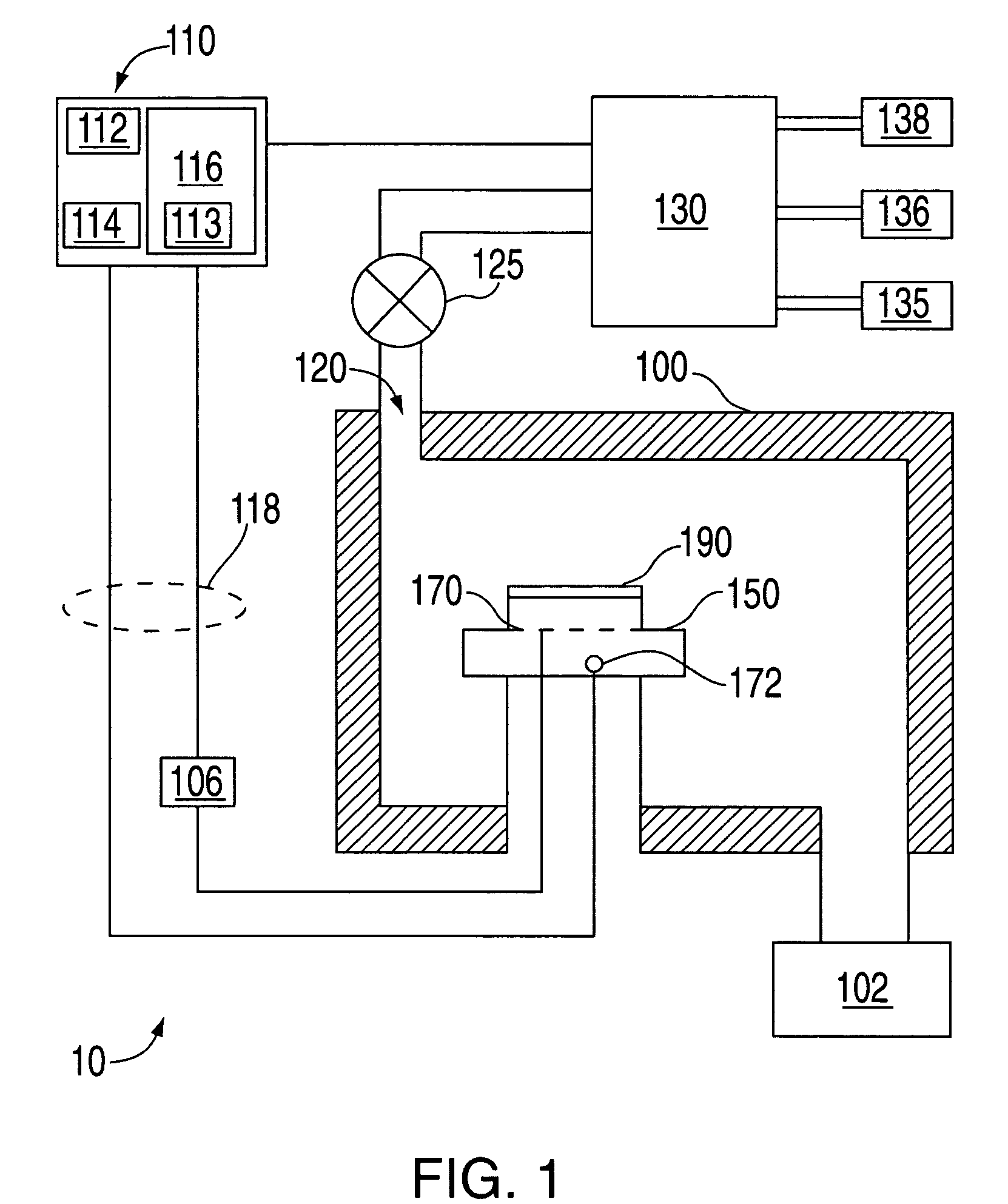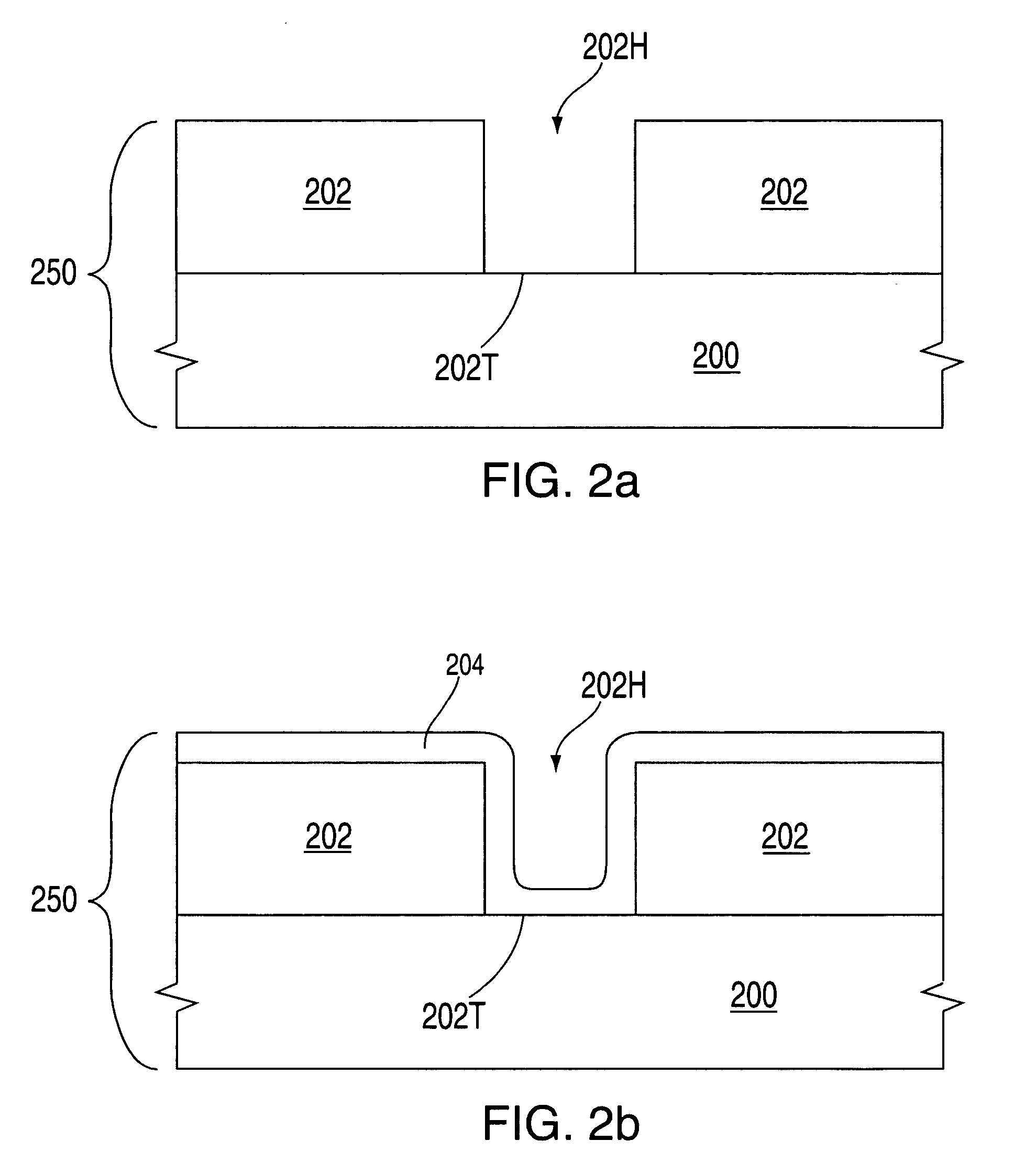Formation of a tantalum-nitride layer
a technology of tantalum nitride and barrier layer, applied in the field of formation, can solve the problems of high chlorine content, inability to meet the requirements of chemical vapor deposition,
- Summary
- Abstract
- Description
- Claims
- Application Information
AI Technical Summary
Benefits of technology
Problems solved by technology
Method used
Image
Examples
Embodiment Construction
[0022]FIG. 1 depicts a schematic illustration of a wafer processing system 10 that can be used to form one or more tantalum-nitride barrier layers in accordance with aspects of the present invention described herein. System 10 comprises process chamber 100, gas panel 130, control unit 110, along with other hardware components such as power supply 106 and vacuum pump 102. For purposes of clarity, salient features of process chamber 100 are briefly described below.
Process Chamber
[0023] Process chamber 100 generally houses a support pedestal 150, which is used to support a substrate such as a semiconductor wafer 190 within process chamber 100. Depending on process requirements, semiconductor wafer 190 can be heated to some desired temperature or within some desired temperature range prior to layer formation using heater 170.
[0024] In chamber 100, wafer support pedestal 150 is heated by an embedded heating element 170. For example, pedestal 150 may be resistively heated by applying ...
PUM
| Property | Measurement | Unit |
|---|---|---|
| temperature | aaaaa | aaaaa |
| pressure | aaaaa | aaaaa |
| temperature | aaaaa | aaaaa |
Abstract
Description
Claims
Application Information
 Login to View More
Login to View More - R&D
- Intellectual Property
- Life Sciences
- Materials
- Tech Scout
- Unparalleled Data Quality
- Higher Quality Content
- 60% Fewer Hallucinations
Browse by: Latest US Patents, China's latest patents, Technical Efficacy Thesaurus, Application Domain, Technology Topic, Popular Technical Reports.
© 2025 PatSnap. All rights reserved.Legal|Privacy policy|Modern Slavery Act Transparency Statement|Sitemap|About US| Contact US: help@patsnap.com



